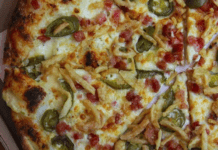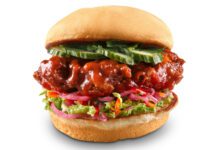Andrew Hunter, Kikkoman corporate executive chef.
What’s the big deal with fermentation?
Differentiation. Chefs are learning new ways to use simple ingredients — beautiful, farm-fresh ingredients — and that’s a great thing. They’re letting those ingredients speak for themselves, but differentiating with technique. They’re good at the basics, like roasting and sautéeing, but in the quest to create a signature for themselves and their restaurants, they’re turning to fermentation. When you can say you made your pickles in house, that’s a point of differentiation. And even more so when your pickles are lotus root or seaweed or beets or turnips.
How popular is fermentation right now?
I think it means something that Noma in Copenhagen, considered one of the top restaurants in the world, does all kinds of fermentation. And I just passed a diner on Hollywood Blvd. that does it, too. It’s a simple process that’s very accessible for chefs.
What’s being fermented?
Cucumbers are still the most popular thing to ferment. After that, cabbage, whether it’s purple or green, because, from cabbage, we make kimchi. Beets are also an interesting and popular vegetable to ferment, in part because they can be a lot of different colours, textures and flavour profiles.
What’s the big deal?
There’s a simple word but a very complex concept called umami, and it’s why Kikkoman is in existence. Umami goes to the very building blocks of our bodies. On a much deeper than an emotional or intellectual level, umami appeals to our core. I call umami the gateway to flavour, because it creates dimension to our food, engages all of our senses.
What are you doing with fermentation at Kikkoman?
Kikkoman’s a very traditional company, so our fermentation products are age old: soy sauce, beer, sake, rice wine vinegar, sesame oil. I’m making some different vegetable pokes with fermented beets, which are delicious. We’re looking for depth of flavour, which fermentation helps. And then there’s colour. If you pick the right vegetables, the acid in the fermentation makes colours brilliant. Beets that are purple and cabbage that is red are times ten after they’ve been fermented.
Presentation is a big part of fermentation at Kikkoman, because it changes the way things look. And it changes textures that are accepted norms. We think of onions as being crisp and crunchy or, if they’ve been cooked, soft and oily. But fermented onions are soft and acidic. Fermentation makes everything different, and that’s what we’re exploring at Kikkoman.



















